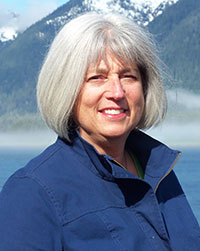
Plan addresses workforce needs of Alaska’s maritime industry By Kris Norosz, Julie Decker and Doug Ward June 11, 2014
We have more miles of coastline than all other U.S. coastal states combined. Alaska’s Arctic coast makes the U.S. an Arctic nation. We share international maritime borders with Russia and Canada. Our location in the North Pacific makes Alaska the strategic lynchpin for logistical, security and economic activity between North America, Europe and Asia. And our only designated National Highway System connector is the Alaska Marine Highway System. The sectors that drive our economy are dependent on direct maritime activity and support. The waters off Alaska’s shores produce more than 60 percent of the nation’s seafood harvest. Significant amounts of oil and gas are produced offshore. Communities and consumers depend upon marine lines for fuel, durable goods and consumer products. In fact, more than 90 percent of all goods arrive on a ship. Ferries, cruise ships and personal watercraft ply our waters filled with commuters, fishers, and sightseers, generating hundreds of millions of dollars annually to Alaska’s economy. Alaska depends on maritime infrastructure to facilitate all of this economic activity. There are 95 ports and harbors in 60 different locations with more than 10,700 mooring slips in our state. Keeping the fleet shipshape creates opportunities to provide shore-side support in the form of marine electronics, boat lifts, supplies and gear. Also, let’s not forget the building and repairing of ships and boats suitable for our waters in Alaska’s shipyards and drydocks. Are you beginning to see the picture? Seafood harvesters, seafood processors, marine occupations, support industry jobs, and research, enhancement and management – all recognize the need to address our critical and growing workforce shortages together. Which is why these groups, joined by five state agencies – Labor and Workforce Development, Fish and Game, Transportation and Public Facilities, Education and Early Development, and Commerce, Community and Economic Development – and the University of Alaska, worked hand-in-hand to develop a strategic plan to work together and support this important workforce. While you won’t see “maritime industry” in any economics report, these sectors all work on or near the water. The workforce for these sectors must possess common skillsets and competencies. A recent study found Alaska ranks third in the nation in per capita maritime jobs. Our state relies heavily on this workforce, estimated at nearly 70,000 jobs, to keep our economy sailing smoothly. That’s why this group of industry, education and government representatives are working together to resolve shared challenges – an aging workforce, misperceptions about maritime career opportunities and difficulties in filling well-paying jobs – through the creation of a maritime workforce development plan. The University of Alaska provided resources to guide the planning effort, hold stakeholder meetings and support development of the plan. With its long commitment to Alaska and particularly the fishing industry, the Rasmuson Foundation leant support and vision to the process. The foundation was instrumental in convening industry, university and state leadership to support the planning process, and to adopt an expansive vision of maritime workforce development. This vision spans frontline occupational preparation to more advanced technical and middle skill careers, as well as professional and managerial opportunities. Senator Lyman Hoffman and Representative Bryce Edgmon also provided leadership, support, and advice as the plan developed. We are grateful for their contributions. After two years of research, assessment and analysis, the Alaska Maritime Workforce Development Plan is now available. It can be downloaded or read online at Labor.Alaska.Gov/MaritimePlan. The plan identifies 23 priority occupations across the four maritime sub-sectors. It also includes strategies to create a seamless workforce development system that will prepare Alaskans for these opportunities. In reality, our work has just begun. Now we must work together to implement the plan, inform Alaskans about maritime job opportunities, align educational and training resources, and create new pathways of opportunity for maritime employers and workers. Over the next few months salmon fisheries will be in full gear, visitors will flock to our shores, and Alaskans will take to the water for commerce, recreation and subsistence. As we enjoy the opportunities our maritime state provides, let’s also make a commitment to work together to build the strong, skilled maritime workforce that makes these opportunities possible. Read the plan. Tell others, such as local educators and maritime business owners. Provide your thoughts and ideas to help us implement the plan. Alaska’s maritime legacy is vast and inspiring. Its future will be equally challenging and rewarding. It begins with educated, trained and experienced Alaskans engaged in marine transportation, maritime support services, marine resource and ecosystem management, and seafood harvesting and processing. Let’s get underway. Kris Norosz Julie Decker Doug Ward
Received June 08, 2014 - Published June 11, 2014 Viewpoints - Opinion Letters:
Representations of fact and opinions in letters are solely those of the author. E-mail your letters
& opinions to editor@sitnews.us Published letters become the property of SitNews.
|
|||


